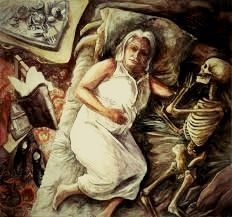Rags to Racism? by Isaac Owens
While capitalism does encourage competition, does it also encourage racism? In the story, "The Battle Royal" by Ralph Ellison, the link between capitalism and racism towards members of the Black community is shown through the narrator, an African American boy, going to present a speech to the white members of upper society. So, by looking at this story through a Marxist lenses, Ralph Ellison clearly shows that capitalism encourages racism, specifically institutional racism, through the use of his characters.
To begin with, the narrator represents the lower-class African Americans in this story. During the time period the story takes place, the position of African Americans in society was key factor for the Southern economy as they were a source of cheap labor for many industries such as plantations and extractive services like coal mining (Goldfield). This led to many white business owners that took advantage of African American labor to take measures that would prevent their labor force from moving up in terms of economic status. In "The Battle Royal" we see subtle examples of this in action. For instance, the narrator talks of how his family has worked hard yet no mention of progress in social class (Ellison). While this may not seem like much, it does demonstrate how African Americans are kept on the lower rungs of class as the American Dream says that hard work will lead you up the social ladder, yet it does not seem to be the case for the narrator's family despite their efforts.
Moving on, there are the wealthy white men present in the story that are meant to be the "elites" of society. Many of the men present at the smoker worked in positions such as bankers, lawyers, and even a priest (Ellison). Even by today's standards, these jobs have a high income and some of them even have sway over the hiring process. Of course, many white people were racially discriminatory in the hiring process, as in a survey taken by African Americans from Philadelphia in 1959, 93 percent of workers believed that the employers in the city discriminated by race (Temple University) which is only a small portion of the country. Part of the reason as to why this occurred was that the racial hierarchy that places African Americans in a disadvantaged position still existed (Berrey). However, one of the largest reasons that the white elite were able to get away with this is their wealth. If they could not handle any legal issues that were caused by their racism, they could simply pay for the problem to go away. In fact, "The Battle Royal" showcased the physical abuse that these people would afflict onto the African American community especially with the image of the electrified rug (Ellison). Adding on to this, they were in charge of a variety of markets including the job market; so many people were unable to confront the elite as the backlash would be too much for them to handle. This is one of the main issues that Marxism has with capitalism. In a capitalist environment, a select few gather the most wealth and a majority of the power. For "The Battle Royal", the people with the power are whites who are racist against African American. These people then influence the remainder of society to be racist as well by implementing laws and services that promote institutionalized racism against the African American people. These same laws would also keep African Americans at a lower class level. This was to make sure that the African American community would have very little chance at amassing the financial power needed to have an impact on their constraints.
So as you can see, "The Battle Royal" shows how capitalism encourages institutionalized racism if you look at it using Marxist theory. The narrator as well as other members of the African American community are representatives of the lower classes who are at the mercy of the whims of the upper-class elites. The white men, who make up the upper-class in the story, are able to spread their racist ideals due to the control their financial power enables them to have over society. On a final note, Marxist theory turns "Battle Royale" into a cautionary tale that warns of how capitalism allows for the potential of unjust ideas to spread.
Works Cited



This is a really good piece. I like how you tie in capitalism as a force continuing racism. You utilize quotes and general pieces of information from the story really well. I also enjoy your use of images, especially the cartoon. It really drives home your point while being positioned in a relevant spot.
ReplyDeleteThe connections that you made between the "real world" and the short story flowed very well together in your writing. Although sad to read, I did find your explanations and information interesting to read. It's not often that we look at literary works through a capitalist or Marxist lens, but you did well at making the information engaging and thought-provoking.
ReplyDelete